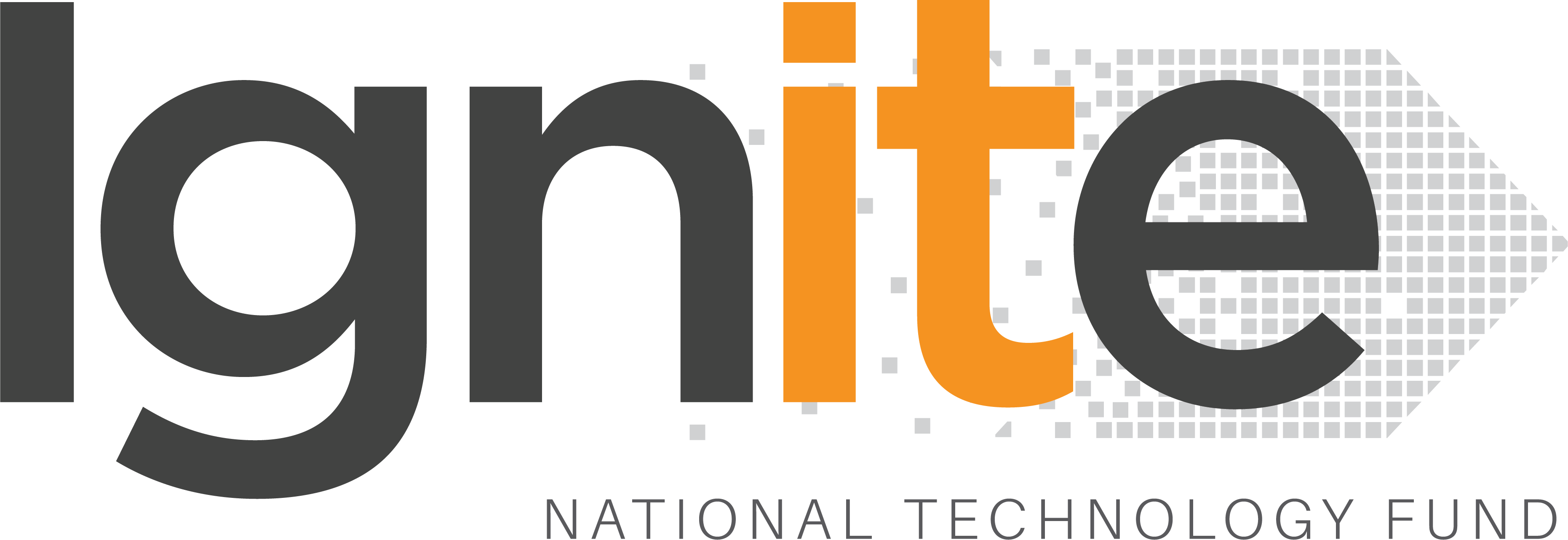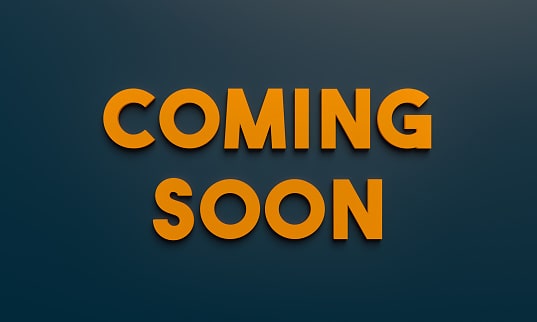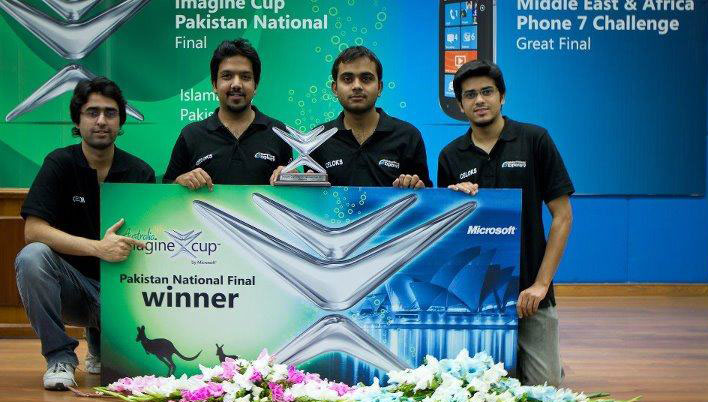Frequently AskedQuestions
Frequently Asked Questions
Grants will be awarded for innovative and promising ICT-related development and research projects by individuals or groups from academia and/or industry/startups actively involved in the development and research individually or collaboratively. These projects should be based on either a universally known technology (preferably 4th Industrial Revolution Technologies) or a new technology to be developed by the applicant and should be aimed at achieving economically viable systems, products, or processes beneficial to the nation.
General Questions
Funding is available to all legally registered entities in Pakistan.
Funding is available in ICT centric projects in the following streams:
- Commercial / Innovative Products
- Technical R&D Projects
Funding is not limited to the following areas only, however they have been defined as priority thematic areas:
- Artificial Intelligence and Big Data
- Augmented and Virtual Reality
- Block Chain
- Cloud Infrastructure and Cyber Security
- Internet of Things (IoT)
- Robotics
- Shared Economy
- NeuroTech
- 3D/4D Printing
- Wearables and Implantables
In order to qualify for funding, the ICT component must have a very significant role in the entire proposed project. The proposal should target a concrete real life application with clear commercial objectives and based on those objectives, a clear methodology and concrete deliverables must also be provided.
Funded proposals are expected to play a key role in fixing innovation and result in wealth generation in the country. We encourage proposals that have a novelty based innovative work by developing solutions for important industrial, commercial and social problems.
It should be a legal entity i.e. sole proprietor, private limited, partnership etc. Personal NTN is not admissible. Further details for incorporating an entity can be obtained from Securities and Exchange Commission of Pakistan (SECP) https://www.secp.gov.pk/company-formation/registration-of-company/.
There is no limit of funding for any company and/or proposal etc. However, we only fund ICT part of the proposed idea.
You cannot transfer payments/foreign currency from Pakistan. If you hire an expatriate (living abroad), payments (in Pak rupees) can be transferred in his/her account in Pakistan against his/her services.
Funding is only available to Pakistani institutions and organizations based in Pakistan. However, collaboration between foreign and Pakistani organizations can be made as per admissible rules.
.
PROPOSAL SUBMISSION
The following points briefly explain the evaluation process.
- Upon receiving, proposal is checked for completeness i.e., application form is filled in properly and relevant documents have been provided by the applicant.
- GM SEED assigns it to Manager Project Evaluation to technically evaluate the proposal.
- After internal evaluation, the project proposal is either recommended for external evaluation or recommended for rejection.
- The proposal is forwarded to (at least) two external experts (depending on the project Tier) selected from the pool of experts comprising of both academia and industry.
- After external evaluation, the project proposal is forwarded to Finance and Monitoring department for review from financial and monitoring aspects respectively.
- Based upon the recommendations from internal and external evaluators, the proposal is presented to Project Appraisal Committee (PAC) for final decision.
Once the proposal is received, we shall examine your proposal for completeness. If complete, we shall start the evaluation process and keep you posted on its progress. In case of shortcomings, a detailed response is provided within three days.
Each proposal is evaluated on its respective technical merits only. Further information is available on our website www.ignite.org.pk [Click Application Forms -> Evaluation Process].
Evaluation is done at two levels:
- Internal Evaluation
- External Evaluation
Internal Evaluation will be done by the Manager Project Evaluation (MPE) and External Evaluation will be done by subject experts from Industry and/or Academia.
During internal and external evaluation process the following aspects of the proposal are examined and looked at in detail.
- The problem / opportunity / gap / need that you want to address/solve.
- Comparison of some of the well-known existing solutions with their known strengths and weaknesses.
- How your solution will address the weaknesses of above mentioned solutions.
- Business/Commercialization plan for the roll-out of the proposed solution.
- Details in Methodology section of the project proposal helps to evaluate the technical plans to achieve project objectives, the demanded man power and or equipment.
- Information in monitoring plan helps to make sure that the objectives of the project (if approved) are monitored and hence achieved within time and budget constraints.
- Demanded budget, and beneficiaries / stakeholders of the project etc.
It is required that in any proposal figures, equations and other material taken from other sources must be properly acknowledged and referred to original source in prescribed format. In case of non-compliance, proposal will be considered as ‘plagiarized’ and will be returned without further processing. Furthermore, an automated software is also being used to check plagiarism in the proposal.
The speed with which applications are processed is contingent upon the completeness of the application and the nature of evaluation required. However, applicants can expect a preliminary response within two weeks of application submission from the Solicitation and Evaluation department.
In case of rejection, applicant reserves the right of an appeal, the process of which is fully explained here
.
CONTENT OF APPLICATION FORM
For unsolicited projects, there is no deadline for submission of the application; however, application should be submitted at least three months prior to targeted commencement date of the project.
PI or PD is an individual who will manage the project technically as well as organizationally. PI or PD should belong to the organization acting as the Principal Investigator’s Organization (PIO) or Project Director’s Organization (PDO).
Only one PI / PD is admissible; another person can be Co-PI or Project Manager (PM).
You may have more than one Co-PI based on the requirements and their roles in the proposed project. Their presence should be adequately justified.
PIO or PDO is typically an organization i.e. a company or a university. PIO/PDO must be a legal entity in Pakistan since legal documentation is required to be completed between Ignite and PIO/PDO. Furthermore, certified copies of incorporation certificate and NTN certificate of the PIO/PDO must be provided while submitting the application/proposal.
Depending on the requirement, other organization(s) may be involved in the proposed project. You need to identify all affiliated organizations collaborating in the project and describe their role/contribution to the project in appropriate section of the Proposal / Application for ICT-Related Technical Development and Research Grant.
A web page, with sufficient details such as executive summary, objectives, is expected to be developed and setup on the company’s website. The project URL should be provided in appropriate section of the Proposal / Application for ICT-Related Technical Development and Research Grant. This URL should be hosted by the project executing agency. Once the proposal is approved, the website should also provide final copy of the proposal and deliverables/progress on the same URL.
Here you would describe the novelty or uniqueness of your idea. For instance, if you are re-inventing the wheel then how it is unique or different from the wheels already invented.
Introduction/Scope: Please describe how the proposed problem is handled currently and why the proposed project is required.
Competitors Analysis: Identify your competitors based on market share or traction within the market, as well as companies that are using a similar solution.
Key Stakeholders: Please identify the key partners and their roles.
Target Customers/Beneficiaries: Please identify the potential customers/beneficiaries and niche market for your proposed solution. Also provide market research analysis including customer interviews, online surveys, mock website, Facebook page etc. in support of your claim to address the problem.
Value Propositions: Please describe the values you plan to deliver to the beneficiaries or problems you are helping to solve and at what cost.
Cost Structures: Please describe the most important costs inherent in the proposed business model.
Revenue Streams: Please provide two to three years’ revenue projections along with a detailed MS-Excel sheet.
Sales/Marketing Plan: Please describe your strategy for penetrating the target markets including proposed marketing, sales and customer acquisition cost/cycles. How will it be delivered to the customers?
In Section 2-B1 namely ‘literature review’, detailed summary of what has been done internationally in the proposed area; quoting references and bibliography is to be provided. Quote relevant references only; we do not expect the evaluators to go through irrelevant/unnecessary references. This section highlights the rate limiting factors and key bottlenecks in the proposed area.
A matrix detailing known key strengths and weaknesses of important and well known / established solutions with a comparison to the proposed solution, along with how these weaknesses will be removed by the proposed solution is to be provided. This will be helpful for evaluators to get a better understanding of the proposed project.
It also demonstrates the depth of knowledge of the project team and builds the confidence of the evaluators about capability of the team in achieving the stated objectives.
Current State-of-the-Art provides details of the solutions currently available in the proposed area.
This section should only describe challenges specific to the research topic that are being faced nationally/internationally.
You may describe here why do you think that the proposed solution(s) is required and what motivated you to develop it.
Please describe measurable objectives of the project and also define the expected results. Use result-oriented wording with verbs such as ‘to develop..’, ‘to implement..’, ‘to research..’, ‘to determine..‘, ‘to identify..’ , etc.
The objectives should not be statements and should not include explanations and benefits. The objective should actually specify in simple words what the project team intends to achieve (something concrete and measurable/ deliverable). Fill only those objectives that are applicable to the proposed project.
It describes the technical details and justification of your development and research plan. In this section, identify specialized equipment, facilities and infrastructure which are required for the project and also their utilization plan. Block diagrams, system flow charts, high level algorithm details etc. have to be provided in this section.
Details in Methodology section of the project proposal helps to evaluate the technical plans to achieve project objectives, the demanded man power and/or equipment. Methodology section has the highest weightage because it provides the insight of how the applicant will achieve respective project objectives.
Please provide details of the specific technologies (H/W, S/W platforms) that will be used in the proposed project. Please also provide reasons for choosing a particular technology while providing the pros and cons of various available choices.
Please describe how the quality of the proposed solution will be assured. What is your testing plan for the proposed solution? This may include unit testing, integration testing, system testing, acceptance testing, etc.
In Section 4-B, required number of persons against each designation must be provided. You may change the designation(s) as per your requirement. The numbers in the table in Section 4-B must tally with the HR Cost sheet in the Budget file.
The team structure is defined by providing details for each required position in the table given in Section 4-C i.e. title/position, role/key responsibilities, minimum qualification required, expertise / background required, minimum experience required (years) and role/key responsibilities of each member. If the project is in collaboration with another partner, the division of manpower at various locations of partners should be provided.
An organogram must also be provided for better understanding of team formation and hierarchies.
Project Activity is the smallest identifiable and measurable piece of work planned to achieve the outcome of the project. In Section 4-D, please list and describe the main project activities, including those associated with the transfer of the research results to customers/beneficiaries. The timing and duration of research activities are to be shown in the Gantt chart in Section 8.
Milestone is an action or event marking a significant change or stage in the course of the project.
Project deliverables are the outputs from a project that normally provide beneficial change. A deliverable is tangible as well as verifiable. A deliverable may be a report, a document, a server upgrade or any other building block of a project.
A deliverable differs from a project milestone in that a milestone is a measurement of progress toward an output whereas the deliverable is the result of the process.
In Section 4-E, all the principal milestones and associated deliverables of the project must be listed and described.
All milestones and deliverables must be defined on quarterly basis i.e. first set of milestones/deliverables may be provided at the end of third month, second at sixth month, third at ninth month and so on. A specimen table is given below.
| Elapsed time from start (in months) of the project | Milestone | Deliverables | |
|---|---|---|---|
| 1 | 3 months | Team hiring, procurement, project office setup, preliminary studies and literature survey | Team hiring report, equipment procurement report, preliminary results report |
| 2 | 6 months | Completion of product design, Development of prototype module, Research paper | Technical specification document Release of module and its demonstration Publication of research paper |
| 2 | 9 months | Systems testing Product development completed, Project Documentation | Test scenarios/report Release of final module and its demonstration User/technical manual |
The individual(s) and/or organization(s) that receive the support/outputs of a project/program are considered as direct customers or beneficiaries of the project.
For example, for a household livelihood support program /project, the father and mother may be the direct recipient of service while other members of the family such as daughter and son are the indirect beneficiaries. Again, if the father or mother receives support for education of their children (son or daughter), then these children will also be in the list of direct beneficiaries.
The timing and duration of all activities are to be shown in the Gantt chart in Section 8. You may use MS-Project or similar software to develop the Gantt chart.
The VC/Rector of University OR CEO/MD of industrial organization should be named as competent authority of the applicant’s organization in the relevant section of the application form.
Newly created IPR (“to be developed during the course of project”) will be assigned to PIO/PI/PD/PDO on the development of IPR on request of PIO/PI/PD/PDO.
Please attach the curriculum vitae (CV) of PI/PD and CPI(s)/PM. Also attach the CVs of core team members if available. Please follow the format included in Annexure A.
The sole purpose behind involvement of academia in industrial projects is the development of human resource, giving exposure to the academia, and preparing young students for future involvement/absorption in the industry. It is preferable to involve faculty member(s) and few students as Research Assistants. Our fund allows inclusion of remuneration/stipends for researchers from academia.
.
FINANCIAL MATTERS
All ‘C’ level positions are allowed a maximum of 50% of their time for the proposed project.
We have our own remuneration determination/estimation criteria for a potential project team’s resource. You may propose your remuneration for a potential project resource with estimated time allocation and market rates. The evaluation team of the Ignite will then take decision on the final remuneration based on the proposed resource’s CV/resume and any evidence (if required) of last drawn salary.
No honoraria is permissible to university/government officials.
The cost component of physical infrastructure development should not be more than 20% of the total proposed project cost, which is exclusive of cost of equipment and includes only brick and mortar.
One international visit for 2 persons (Max) is allowed to startups/industrial applicants for marketing, sales, participating in pitching sessions, roadshows etc.
Yes, funding for filing a patent arising out of the proposed project is permissible. Breakup of cost must be provided.




